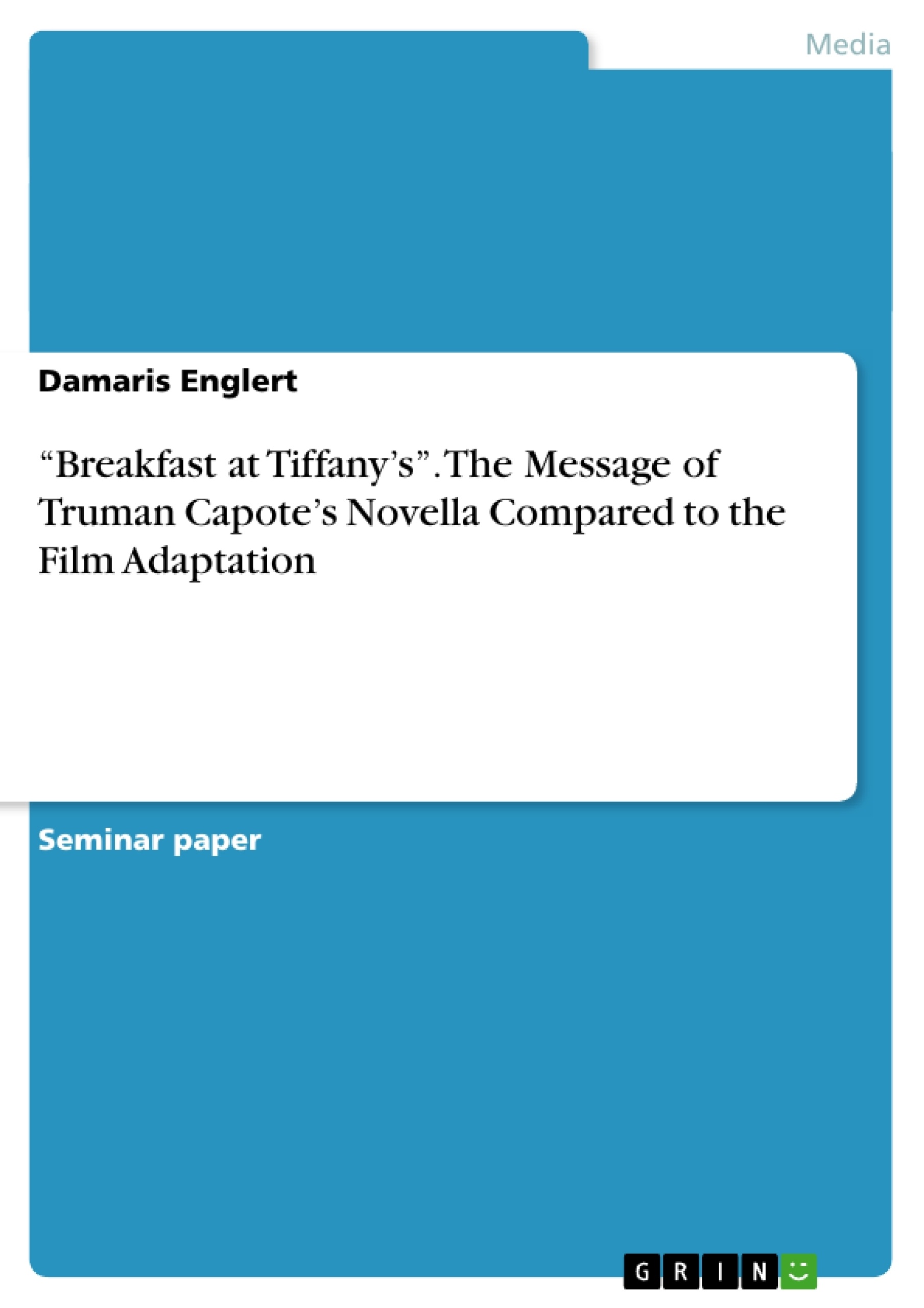The story of "Breakfast at Tiffany's" is well known: Holly, a young glamour girl, tries to find her way in New York City, relying on the favor of male benefactors who give her “powder-room change”, while at the same time she keeps chasing her dream of marrying a rich millionaire. Paul Varjak, a young writer, falls in love with her and tries to convince her to settle down with him. The movie has become a crucial cultural reference. But before the film, there was a source text: a novella by the same title, written by Truman Capote and published in 1958. The film adaption was made only three years later, by director Blake Edwards, scriptwriter George Axelrod and the producers Martin Jurow and Richard Shepherd.
Those who have read Capote’s novella and have seen the film usually complain about huge difference between the two – and they undoubtedly have a point. However, adaptation studies have far too long concentrated on the issue of fidelity alone, implying that a story could just be projected on the screen without having to undergo change. But film and literature are two very different mediums and thus, in the process of an adaptation, transformation must occur. There is no need for proving that book and film are different – this has been discussed many times before and can be read in a great number of critical reviews. But there is much more to adaptation studies than a simple fidelity analysis. What I intend to do is to find out why book and film differ crucially in many points in order to prove that in spite of sharing (at least in big part) the same characters, the same setting, important parts of the story, key motifs and even often the same dialogues, the novella Breakfast at Tiffany’s and the film based on it actually tell very different stories with very different, even contradictory underlying messages and thus with a very different reception and impact.
Table of Contents
1. Introduction
2. A Look at the Source Text: Capote’s Breakfast at Tiffany’s
3. A Look at the Adaptation Process: from Book to Film
3.1. The Rocky Road to Adaptation
3.2. The Issue of Sexuality
4. A Look at How the Story is Told in Book and Film
4.1. The Plo
4.2. The Characters
4.2.1. Holly Golightly
4.2.2. The Narrator/Paul Varjak
4.3. The Atmosphere
4.4. Key Issues and Motifs
4.4.1 The Conflict Between Security and Freedom.
4.4.2. The Quest for Identity: in Search of a Name
4.4.3. Diversity of Love
5. Conclusion
7. Works Cited
8. Table of Figures
- Quote paper
- B.A. Damaris Englert (Author), 2013, “Breakfast at Tiffany’s”. The Message of Truman Capote’s Novella Compared to the Film Adaptation, Munich, GRIN Verlag, https://www.grin.com/document/263601
-

-

-

-
Upload your own papers! Earn money and win an iPhone X. -

-
Upload your own papers! Earn money and win an iPhone X. -

-
Upload your own papers! Earn money and win an iPhone X. -

-
Upload your own papers! Earn money and win an iPhone X. -

-
Upload your own papers! Earn money and win an iPhone X. -

-
Upload your own papers! Earn money and win an iPhone X. -

-
Upload your own papers! Earn money and win an iPhone X. -

-
Upload your own papers! Earn money and win an iPhone X.

